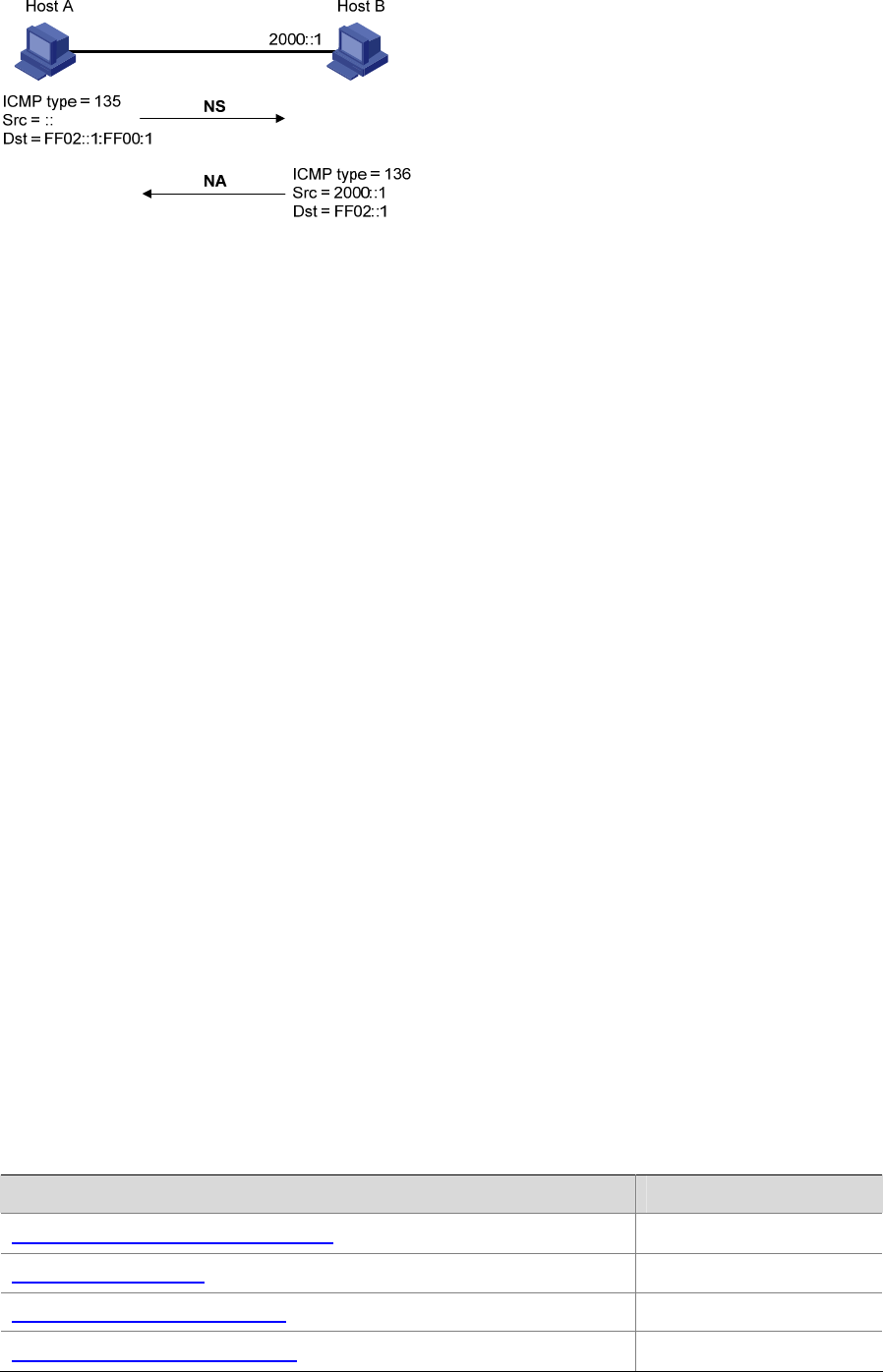
1-8
Figure 1-4 Duplicate address detection
The duplicate address detection procedure is as follows:
1) Node A sends an NS message whose source address is the unassigned address :: and the
destination address is the corresponding solicited-node multicast address of the IPv6 address to
be detected. The NS message also contains the IPv6 address.
2) If node B uses this IPv6 address, node B returns an NA message. The NA message contains the
IPv6 address of node B.
3) Node A learns that the IPv6 address is being used by node B after receiving the NA message from
node B. Otherwise, node B is not using the IPv6 address and node A can use it.
Protocols and Standards
Protocol specifications related to IPv6 include:
z RFC 1881: IPv6 Address Allocation Management
z RFC 1887: An Architecture for IPv6 Unicast Address Allocation
z RFC 1981: Path MTU Discovery for IP version 6
z RFC 2375: IPv6 Multicast Address Assignments
z RFC 2460: Internet Protocol, Version 6 (IPv6) Specification.
z RFC 2461: Neighbor Discovery for IP Version 6 (IPv6)
z RFC 2462: IPv6 Stateless Address Autoconfiguration
z RFC 2463: Internet Control Message Protocol (ICMPv6) for the Internet Protocol Version 6 (IPv6)
Specification
z RFC 2464: Transmission of IPv6 Packets over Ethernet Networks
z RFC 2526: Reserved IPv6 Subnet Anycast Addresses
z RFC 3307: Allocation Guidelines for IPv6 Multicast Addresses
z RFC 3513: Internet Protocol Version 6 (IPv6) Addressing Architecture
IPv6 Configuration Task List
Complete the following tasks to configure IPv6:
Task Remarks
Configuring an IPv6 Unicast Address Required
Configuring IPv6 NDP Optional
Configuring a Static IPv6 Route Optional
Configuring IPv6 TCP Properties Optional


















